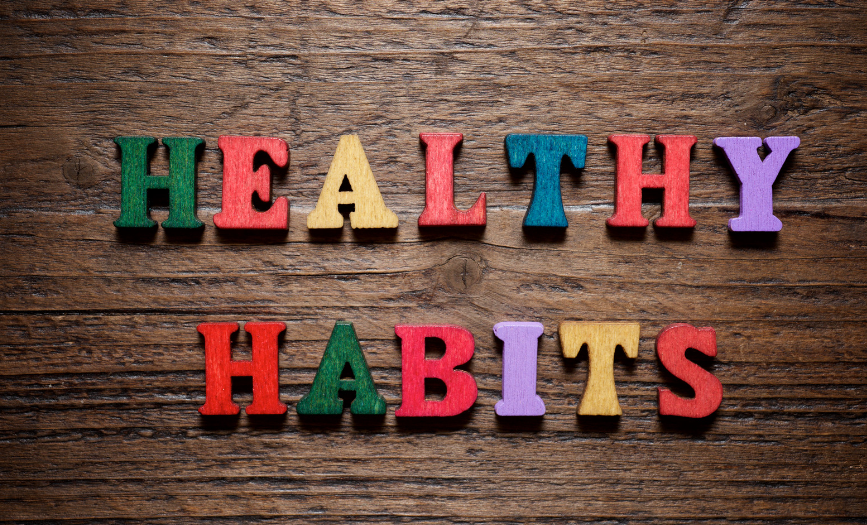Imagine that it’s April. The weather is warming up and it’s time to pull your spring clothes out of storage, including the bathing suit you shoved in the back of your closet in September. While doing your spring cleaning, you start to try on your warm-weather clothes and … they’re a little snugger than you remember.
No, the magic clothes-shrinking fairy didn’t go to town on your wardrobe over the winter. You remember now: the holiday cookies, the workouts you skipped due to the cold, all that hot chocolate you sipped. And, come to think of it, when was the last time you actually noticed your body shape underneath all those bulky winter sweaters and baggy flannel pants?
Clothes-shrinking fairies may not be real, but winter weight gain certainly is. Between the colder weather, shortened daylight hours and seemingly endless indulgent holidays (from Christmas to Valentine's Day), there's no question winter creates a perfect storm for weight gain. Even the most motivated people become sidetracked during the colder months. But don't let the odds get you down! A little motivation and willpower can get you through this rough patch of the year without derailing your healthy lifestyle efforts. Here are some tips to help you overcome the most common winter hurdles.
Make Fitness a Priority
Although frequent physical activity should be a year-round goal, try even harder to put exercise at the top of your to-do list during the winter. Not only will it keep the pounds from creeping on, but it will also get your brain circulating feel-good endorphins to prevent seasonal affective disorder (SAD) during the months of cold weather and sparse sunlight. (And let’s face it, feeling down or depressed isn’t going to do anything to help your motivation to eat well or exercise.) You can also seize this opportunity to switch up your workouts and enjoy the winter sports (think skiing and ice skating) that aren't available during the rest of the year. As a bonus, many wintertime activities tend to be group-oriented and family-friendly, so participating is a great way to bond with friends and loved ones while keeping fit.
Create a Realistic Eating Strategy for the Holidays
You may think that the holidays end on Jan. 1, but you still have to face Super Bowl Sunday, Valentine's Day and even St. Patrick's Day before spring rolls around. Diving headfirst into the holiday feasting season without a game plan is a recipe for added pounds. Prepare to avoid the "all-or-nothing" mentality of the holiday treats by allowing yourself to savor small amounts of your absolute favorite dishes. As you eat, be mindful of your food and of the moment in which you're enjoying it. Eat until you are satisfied (but not stuffed!), and then focus on the company and conversation; after all, that's what the holidays are really about.
Don’t Let Comfort Food Make You Uncomfortable in Your Clothes
From gooey macaroni and cheese to freshly baked cookies, chowing down on some good old-fashioned comfort food passes the time, warms your body and makes the dreary winter months more tolerable. Although comfort foods may be good for the soul, few are friendly to your waistline.
Instead of turning to food to lose the winter blues, stop and think about what’s getting you down in the first place. Are you feeling cold? Warm up with a hot cup of tea (it’s calorie-free!) or cuddle up under a big, fluffy blanket. Is the weather making you stir-crazy? Call up a friend and do something active together to get you out of the house and keep your blood pumping. Identifying the reasons why you want to eat will make it easier to take a step back and make a healthier choice.
If you don’t want to give up on your favorite winter comfort foods altogether, you can still have them! Just make sure to use the principles of moderation and smart substitutions to stay on track with your healthy efforts. When making your favorite comfort dishes, use low-fat milk and cheese whenever possible, and substitute healthier cooking methods, like baking instead of frying. Give yourself permission to enjoy a small serving and remind yourself that it will be there again later if you want it—there’s no need to eat the whole casserole in one sitting!
Rethink Your Winter Drinks
From October through January, high-calorie seasonal drinks such as spiced gingerbread lattes, hot chocolate and warm apple cider flood restaurant menus. They may lure you in with their festive names and adorable whipped cream crowns, but look out: Some medium-sized drinks can clock in at 500 calories—or more, if you order the larger sizes. To lighten up a seasonal drink, enjoy the smallest size with skim milk, sugar-free syrup and light (or no) whipped cream, or swap it out for a healthier alternative, like hot tea or plain coffee. If you have an insatiable craving for the real deal, indulge in the smallest portion, but be diligent about your diet (or add a little more physical activity) the rest of the day.
Avoid the Social Eating Trap
Winter social gatherings tend to center around a lot of sedentary activity and heavy amounts of food (think Sunday night football with baskets of jalapeno poppers and chicken wings). If your friends are indulging in high-calorie winter fare while lounging in front of the tube, chances are you’re likely to join them. Studies show that people tend to mimic the eating habits of their peers and social groups. Eating together is also a bonding experience, and it can be awkward to sit and watch someone else indulge without joining in. If someone is eating, you may feel indirect pressure to eat as well, regardless of your true hunger levels or healthy living goals.
When eating socially, keep your goals in mind and make them clear to those around you. Voice your weight-loss goals to your friends before you find yourself in a situation where you might be inadvertently pressured to eat something. If your friends want to nosh on foods that don’t fit in with your meal plan, choose a restaurant that can accommodate everyone’s needs. If you’re cooking together, make your own lighter portion of the dish (like leaving off the cheese on your portion of a homemade pizza), or bring a healthy dish of your own to eat.
Stop Bingeing out of Boredom
With the colder temperatures and extreme weather conditions, you may often find yourself cooped up in the house more often in the winter than during other times of the year. Many people turn to food for stimulation when they are bored, which makes sense; it tastes good, gives you something to do and takes your mind off of stressors. However, eating might not be the most favorable winter pastime for your weight or health. Here are some fun ideas to distract you from the pantry:
- Start turning your holiday photos into a fun scrapbook for your family to enjoy.
- Take up knitting and practice making scarves and mittens—it passes the time and is practical, too!
- Join an online or in-person book club, or create one with your friends.
- Host a fitness party! Get a group together to eat healthy snacks and swap favorite workout routines and healthy recipes. It’s a great alternative to getting together for a sedentary game night!
- Make an inspiration board to remind you of your healthy living goals. Cut pictures and quotes from magazines and glue them onto a piece of poster board to hang in a place where you’ll see it every day. You could also make an ongoing motivational scrapbook to help you focus on your goals and keep your hands busy whenever you feel like mindlessly snacking.
Don’t Let the Flu Sabotage Your Fitness
A big roadblock to wintertime weight loss is that nasty little bug that comes crawling back every year: the flu. Winter is prime cold and flu season since people tend to spend more time indoors, creating a breeding ground for germs. The stress of the holiday season can also wear down the immune system and make you more susceptible to illness. When you get sick, you might tend to eat more of your favorite high-calorie comfort foods while skipping out on regular exercise, creating a combination for weight gain. Although it’s inevitable that you will get sick at some point, there are ways to reduce your chances of it happening:
- Wash your hands as often as you can, especially when someone in your household is sick. Hand sanitizer is not as effective, but will work in a pinch if there is no soap and water available.
- Avoid touching the mucous membranes of your eyes, nose and mouth with your bare hands. Touching your face is one of the easiest ways for germs to get into your body.
- Regularly disinfect the most-used surfaces and items in your home, including doorknobs, countertops and TV remotes.
- Keep your immune system and metabolism revved up to ward off illness by getting at least eight hours of sleep per night, exercising regularly and drinking plenty of water throughout the day.
- Go outside and get some fresh air whenever possible. Staying inside too long, especially with other people, is a recipe for multiplying germs.
Be Mindful of Your Body’s Signals
Winter is a busy time, and personal health is often the first thing to get lost in the shuffle. Your hunger and fullness cues get thrown out of whack over the food-centric parties, and you’re stressed from buying gifts, attending gatherings and dealing with bad weather. It’s important to notice when you lose track of how you’re feeling, as it can cause you to lose focus on your healthy lifestyle efforts. There are a few simple things you can do to keep yourself accountable for your health during the winter:
- Step on the scale. Keeping an eye on your weight can help stop major gains before they spiral out of control. Aim to weigh yourself once a week to track broad trends. The scale does not define you, but it can serve as a helpful tool when you need a little extra motivation during the winter.
- Keep tabs on how your clothes are fitting. In the colder months, we lounge at home more often (hello, elastic-waist sweatpants!), and wear more layers and chunky sweaters to keep warm. Although these clothes are functional for the weather, they don’t allow you to see subtle changes in your body. It’s easier to see small gains during the warmer months when you’re wearing thinner layers or sporting a bathing suit. During the winter, try on some of your warm-weather clothes every few weeks to make sure they still fit and to monitor any changes in your body. That way, there will be no surprises when spring hits.
- Combat stress. When you find yourself getting consumed with winter stress and turning to unhealthy habits, stop what you’re doing for a few minutes and do a mental check-in. What are you thinking about? How does your body feel? What do you truly need right now? Sometimes you’ll find that you may think you’re hungry, but are actually dehydrated due to the dry weather. Or, you may realize your body is craving movement more than that extra slice of pie. By making an effort to be in tune with yourself, you will be more mindful about sticking with your healthy intentions.
This time of year is tough, but by maintaining healthy habits, you'll be better equipped to deal with colder, darker days.












